
Alamosa: The Heart of the San Luis Valley
Discover Alamosa, Colorado: A gateway to the Great Sand Dunes, scenic train rides, and rich cultural history in the beautiful San Luis Valley.
Nestled in the San Luis Valley, Alamosa is a charming city in southern Colorado. Known for its breathtaking landscapes, it is a perfect destination for nature lovers and adventure seekers. Surrounded by majestic mountains and endless plains, Alamosa offers a serene escape from the hustle and bustle of city life. One of the main attractions near Alamosa is the Great Sand Dunes National Park and Preserve. Here, visitors can marvel at the tallest sand dunes in North America, hike scenic trails, and even try sandboarding. The park's diverse ecosystem is a haven for wildlife enthusiasts and photographers alike. The Rio Grande Scenic Railroad is another highlight. This historic train ride offers stunning views of the Colorado countryside, making it a must-see for any visitor. The journey takes you through picturesque valleys, and you might even spot some local wildlife along the way. For those interested in cultural experiences, Alamosa has a rich history reflected in its local museums and heritage sites. The San Luis Valley Museum provides an insightful look into the region's past, from Native American artifacts to pioneer history. Meanwhile, the Adams State University campus adds a youthful energy to the city, with various events and exhibitions open to the public. Dining in Alamosa is a treat in itself. The city boasts a variety of restaurants offering everything from hearty American cuisine to flavorful Mexican dishes. Don't forget to try the local green chili, a regional specialty that will tantalize your taste buds. Whether you're here for the natural beauty, the cultural heritage, or simply to relax, Alamosa promises an unforgettable experience.
Local tips in Alamosa
- Visit the Great Sand Dunes early in the morning or late in the afternoon to avoid the heat and crowds.
- Pack layers of clothing; Alamosa's weather can change rapidly, with cool mornings and warm afternoons.
- Book your Rio Grande Scenic Railroad tickets in advance, especially during peak tourist season.
- Explore local eateries for authentic green chili dishes; they are a highlight of the regional cuisine.
- Check the event calendar at Adams State University for cultural and educational events open to the public.
Alamosa: The Heart of the San Luis Valley
Nestled in the San Luis Valley, Alamosa is a charming city in southern Colorado. Known for its breathtaking landscapes, it is a perfect destination for nature lovers and adventure seekers. Surrounded by majestic mountains and endless plains, Alamosa offers a serene escape from the hustle and bustle of city life. One of the main attractions near Alamosa is the Great Sand Dunes National Park and Preserve. Here, visitors can marvel at the tallest sand dunes in North America, hike scenic trails, and even try sandboarding. The park's diverse ecosystem is a haven for wildlife enthusiasts and photographers alike. The Rio Grande Scenic Railroad is another highlight. This historic train ride offers stunning views of the Colorado countryside, making it a must-see for any visitor. The journey takes you through picturesque valleys, and you might even spot some local wildlife along the way. For those interested in cultural experiences, Alamosa has a rich history reflected in its local museums and heritage sites. The San Luis Valley Museum provides an insightful look into the region's past, from Native American artifacts to pioneer history. Meanwhile, the Adams State University campus adds a youthful energy to the city, with various events and exhibitions open to the public. Dining in Alamosa is a treat in itself. The city boasts a variety of restaurants offering everything from hearty American cuisine to flavorful Mexican dishes. Don't forget to try the local green chili, a regional specialty that will tantalize your taste buds. Whether you're here for the natural beauty, the cultural heritage, or simply to relax, Alamosa promises an unforgettable experience.
When is the best time to go to Alamosa?
Iconic landmarks you can’t miss
Calvillo's Mexican Restaurant
Experience the authentic taste of Mexico at Calvillo's Mexican Restaurant, Alamosa's favorite spot for delicious cuisine and mouthwatering desserts.

IHOP
Savor delicious American breakfast classics at IHOP in Alamosa, where family-friendly dining meets a welcoming atmosphere.

The Rubi Slipper LLC
Discover a delightful mix of American, Mexican, and seafood cuisine at The Rubi Slipper LLC in Alamosa, Colorado, where every dish is a local favorite.

Nino's Del Sol LLC
Experience the vibrant tastes of Latin cuisine at Nino's Del Sol in Alamosa, Colorado, where every dish tells a story of culture and flavor.

Cole Park
Discover the tranquil beauty and recreational opportunities at Cole Park, Alamosa's premier outdoor destination for relaxation and fun.

The Purple Pig Pizzeria & Pub
Experience the best of Alamosa with gourmet pizzas and local brews at The Purple Pig Pizzeria & Pub, a favorite among tourists and locals alike.

Hampton Inn Alamosa, CO
Discover comfort and convenience at Hampton Inn Alamosa, your gateway to exploring the breathtaking landscapes of Colorado's San Luis Valley.

Cool Sunshine RV Park, LLC
Experience the beauty of Colorado's outdoors at Cool Sunshine RV Park, a serene retreat perfect for RV travelers and nature lovers.

San Luis Valley Brewing Company
Discover the local flavors of Alamosa at San Luis Valley Brewing Company, where craft beer meets comfort food in a welcoming atmosphere.

Oscar's Mexican Restaurant
Experience the vibrant flavors of Mexico at Oscar's Mexican Restaurant in Alamosa, Colorado, a must-visit for an authentic culinary adventure.

Woody's Q Shack
Experience authentic barbecue at Woody's Q Shack in Alamosa, Colorado—where every bite tells a delicious story of smoked meats and homemade flavors.

Milagros Coffee House
Discover the warmth and flavor of Alamosa at Milagros Coffee House, where delightful brews and scrumptious breakfasts await every visitor.
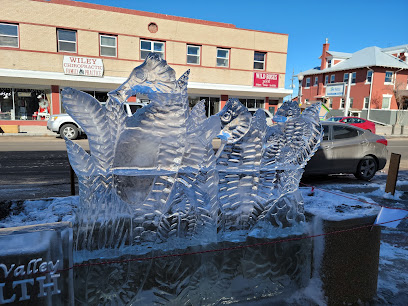
Mi Taquito
Experience authentic Mexican cuisine at Mi Taquito in Alamosa, where delicious flavors and fast service await every visitor.

Fairfield Inn & Suites Alamosa
Experience comfort and convenience at Fairfield Inn & Suites Alamosa, your perfect base for exploring the beauty of Colorado's San Luis Valley.

Kristi Mountain Sports, LLC - Alamosa
Discover the ultimate outdoor experience at Kristi Mountain Sports, your go-to destination for skiing, biking, and camping gear in Alamosa, Colorado.

Unmissable attractions to see
Great Sand Dunes National Park and Preserve
Explore the breathtaking Great Sand Dunes National Park and Preserve in Colorado, where towering sand dunes meet stunning mountain vistas.

Great Sand Dunes Visitor Center
Discover the beauty and adventure at Great Sand Dunes Visitor Center, your gateway to Colorado's stunning landscapes and outdoor activities.

Zapata Falls
Experience the breathtaking beauty and adventure of Zapata Falls, a stunning natural wonder in Colorado's San Luis Valley, perfect for hiking and exploration.
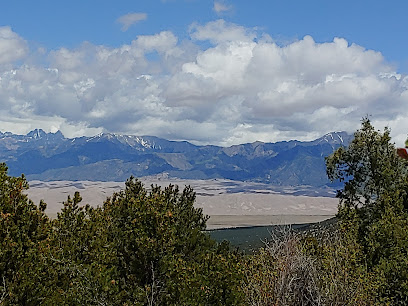
Cole Park
Experience the serene beauty of Cole Park in Alamosa, Colorado, where stunning mountain views and lush landscapes await your visit.

San Luis Valley Brewing Company
Experience the unique flavors of the San Luis Valley at San Luis Valley Brewing Company, where craft beer and delicious meals come together.

Splashland LLC
Experience the ultimate swimming escape at Splashland LLC in Alamosa, Colorado – a perfect blend of fun, relaxation, and family-friendly activities.
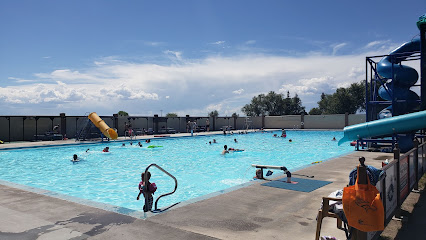
Alamosa National Wildlife Refuge and Visitor Center
Explore the stunning Alamosa National Wildlife Refuge, a sanctuary for wildlife and nature lovers in the heart of Colorado's breathtaking landscapes.
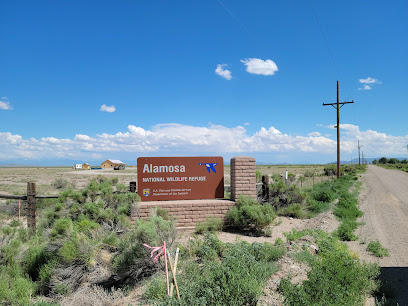
San Luis Valley Museum | Alamosa
Explore the San Luis Valley Museum in Alamosa, a captivating destination for history lovers and curious travelers alike with rich exhibits and engaging stories.

Rio Grande Farm Park
Discover the natural beauty and agricultural charm of Rio Grande Farm Park, a serene escape in Alamosa, Colorado, perfect for families and nature lovers.

Society Hall
Immerse yourself in the vibrant local music scene at Society Hall, a premier live music venue in Alamosa, Colorado, showcasing diverse musical talents.

The Wet Paintbrush
Experience the perfect blend of creativity and relaxation at The Wet Paintbrush, Alamosa's premier painting studio and wine bar.

Alamosa Riparian Park
Explore the serene beauty of Alamosa Riparian Park, a hidden gem in Colorado perfect for relaxation, family fun, and nature walks.

Firedworks Gallery
Explore Firedworks Gallery in Alamosa, Colorado for unique art and handcrafted gifts that celebrate local creativity and culture.

Alamosa Sub
Experience the natural beauty and tranquility of Alamosa Sub Park, a perfect outdoor escape in the heart of Colorado.

Adams State University - Luther Bean Museum
Explore the rich history and culture of the San Luis Valley at Adams State University's Luther Bean Museum in Alamosa, Colorado.

Essential places to dine
Calvillo's Mexican Restaurant
Discover the vibrant flavors of Mexico at Calvillo's Mexican Restaurant in Alamosa, where authentic dishes meet warm hospitality.
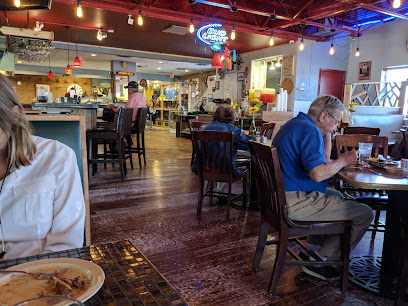
Chili's Grill & Bar
Experience the vibrant flavors of America and Tex-Mex at Chili's Grill & Bar in Alamosa – perfect for families seeking delicious meals.

McDonald's
Experience affordable dining at McDonald's in Alamosa: perfect for quick meals any time of day.

IHOP
Discover the delightful taste of breakfast at IHOP in Alamosa - where fluffy pancakes meet family-friendly service.

The Rubi Slipper LLC
Experience diverse American cuisine at The Rubi Slipper LLC in Alamosa - where delicious burgers meet fresh seafood and delightful desserts.

Arby's
Experience the iconic flavors of Arby's in Alamosa, where delicious sandwiches meet friendly service in a charming Colorado setting.

Sonic Drive-In
Discover Sonic Drive-In in Alamosa: A classic fast food experience with delicious burgers and refreshing drinks perfect for every traveler.
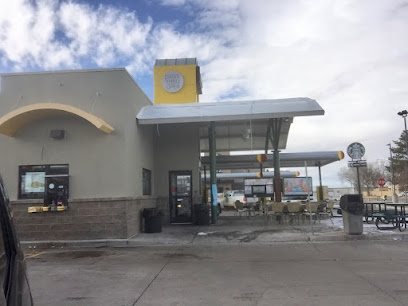
Campus Café
Experience the heartwarming flavors of America at Campus Café - Alamosa's top destination for delicious breakfasts and friendly service.

Nino's Del Sol LLC
Discover authentic flavors at Nino's Del Sol in Alamosa, where vibrant dishes meet warm hospitality for an unforgettable dining experience.

The Purple Pig Pizzeria & Pub
Experience delicious pizzas and lively pub vibes at The Purple Pig Pizzeria & Pub in Alamosa - perfect for food lovers!

El Super Taco
Experience authentic Mexican flavors at El Super Taco in Alamosa – where every dish tells a story.

Wendy's
Savor delicious burgers and fast food favorites at Wendy's in Alamosa - your go-to spot for quick bites and family-friendly dining.
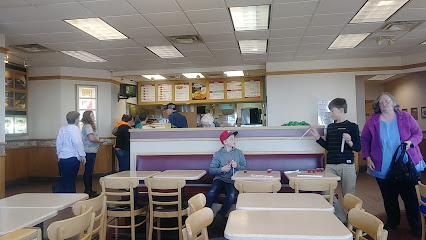
Taco Bell
Discover tasty Tex-Mex delights at Taco Bell in Alamosa - where flavor meets affordability in a vibrant fast-food setting.
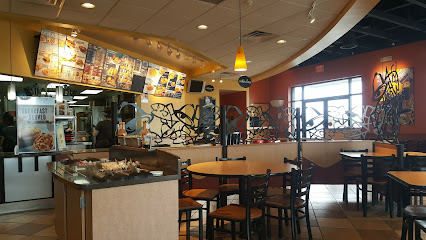
San Luis Valley Brewing Company
Discover local craft brews and delicious dishes at San Luis Valley Brewing Company in Alamosa - A must-visit for foodies and beer lovers!

Oscar's Mexican Restaurant
Experience authentic Mexican cuisine at Oscar's Mexican Restaurant in Alamosa - where every meal is a celebration of flavor.

Markets, malls and hidden boutiques
Walmart Supercenter
Explore the Walmart Supercenter in Alamosa for all your shopping needs, from groceries to electronics, at affordable prices.

City Market
Discover the flavors of Alamosa at City Market, your one-stop grocery store for fresh produce, local treats, and delightful surprises.
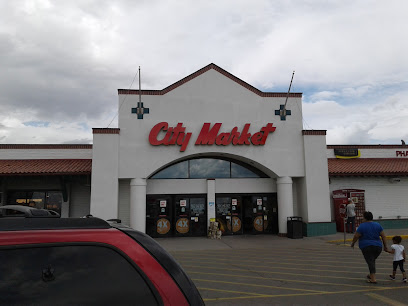
Milagros Coffee House
Discover the heart of Alamosa at Milagros Coffee House, where fresh coffee, delicious breakfast, and community warmth await.

Kristi Mountain Sports, LLC - Alamosa
Explore the great outdoors with Kristi Mountain Sports, your premier outdoor adventure outfitter in Alamosa, Colorado.
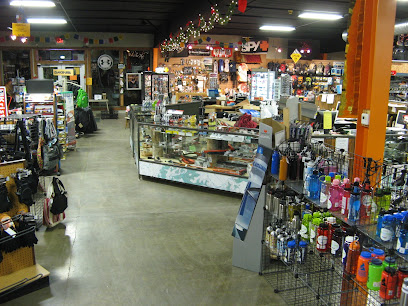
Roots by Blessed Brews Coffee Shop
Experience the heart of Alamosa at Roots by Blessed Brews Coffee Shop, where every cup is crafted with passion and a sense of community.

Dollar Tree
Explore Dollar Tree in Alamosa for unbeatable deals on everyday essentials, craft supplies, and more—all for just a dollar!

The Shop Tattoo & Comics
Explore The Shop Tattoo & Comics in Alamosa for an unforgettable fusion of tattoo artistry and comic book culture, perfect for every creative spirit.

HobbyTown
Explore HobbyTown in Alamosa, Colorado - a vibrant store for all hobbyists with endless supplies and community events to inspire creativity.

Green Spot Garden Center
Explore the vibrant Green Spot Garden Center in Alamosa, Colorado, your one-stop destination for all things gardening and nature.

Big R Stores - Alamosa
Discover a diverse range of products at Big R Stores in Alamosa, from outdoor gear to clothing and unique local finds, perfect for every traveler.

Rainbow's End Thrift Store
Explore the treasures of Rainbow's End Thrift Store in Alamosa, where every purchase supports the local community and offers unique finds for every shopper.

Narrow Gauge Book Cooperative
Explore a treasure trove of books and local literature at Narrow Gauge Book Cooperative in Alamosa, Colorado.

Lightshine Music
Explore a world of music at Lightshine Music, Alamosa's premier destination for musical instruments and community events.

Treasure Alley
Explore unique gifts and local crafts at Treasure Alley, Alamosa's beloved gift shop, showcasing the charm of Colorado.

Maurices
Explore stylish women's and plus-size clothing at Maurices in Alamosa, Colorado—where fashion meets affordability in a welcoming atmosphere.

Essential bars & hidden hideouts
Calvillo's Mexican Restaurant
Experience the vibrant flavors of Mexico at Calvillo's Mexican Restaurant, a culinary gem in Alamosa, Colorado, known for its authentic dishes and delightful desserts.

Chili's Grill & Bar
Experience a blend of American and Tex-Mex flavors at Chili's Grill & Bar in Alamosa, the perfect spot for family dining and casual gatherings.

The Rubi Slipper LLC
Discover the culinary delights at The Rubi Slipper LLC in Alamosa, where American, Mexican, and seafood dishes create an unforgettable dining experience.

The Purple Pig Pizzeria & Pub
Savor delightful pizzas and local brews at The Purple Pig Pizzeria & Pub, where community meets cuisine in the heart of Alamosa.

San Luis Valley Brewing Company
Experience the finest craft brews and delicious cuisine at San Luis Valley Brewing Company in Alamosa, Colorado.

Juanito's Mexican Kitchen
Experience the vibrant flavors of Mexico at Juanito's Mexican Kitchen, where authentic cuisine meets a warm, inviting atmosphere in Alamosa, Colorado.

My Brothers Place
Experience a cozy dining atmosphere at My Brothers Place in Alamosa, where delicious food and a great beer selection await every visitor.

4th Street Grille
Discover the culinary delight of 4th Street Grille in Alamosa, a must-visit for American cuisine enthusiasts and bubble tea lovers.

Emma's Authentic Food Of The Southwest
Experience the essence of Southwestern cuisine at Emma's Authentic Food, a culinary haven in Alamosa, Colorado, perfect for food lovers.

Roast Cafe
Experience the essence of Alamosa at Roast Cafe, where artisanal coffee and a cozy atmosphere unite for an unforgettable cafe experience.

St Ives A Pub & Eatery
Experience the best of local cuisine and craft beers at St Ives A Pub & Eatery, a favorite hangout spot in Alamosa, Colorado.

The Friar's Fork & Sanctuary
Discover The Friar's Fork & Sanctuary, where culinary creativity meets a vibrant atmosphere in Alamosa, perfect for food lovers and socializers alike.

Crazy Corner Cafe
Experience the cozy ambiance and delicious menu at Crazy Corner Cafe, a beloved spot in Alamosa, Colorado, perfect for travelers seeking comfort food.

Weekends Tavern
Experience the lively atmosphere and delicious menu at Weekends Tavern, a must-visit grill and bar in Alamosa, Colorado.

Bank Shot Sports Bar & Pool Hall
Discover the vibrant ambiance of Bank Shot Sports Bar & Pool Hall, Alamosa's go-to destination for sports, games, and great drinks.

Local Phrases
-
- HelloHowdy
[haw-dee] - GoodbyeSee ya
[see yah] - YesYep
[yep] - NoNope
[nohp] - Please/You're welcomePlease/You're welcome
[pleez / yur wel-kum] - Thank youThanks
[thanks] - Excuse me/SorryPardon me
[par-dun mee] - How are you?Howdy
[haw-dee] - Fine. And you?Fine. And you?
[fahyn. and yoo?] - Do you speak English?Do you speak English?
[doo yoo speek ing-lish?] - I don't understandI don't get it
[ahy dohnt get it]
- HelloHowdy
-
- I'd like to see the menu, pleaseCan I see the menu?
[kan eye see thee men-yoo?] - I don't eat meatI don't eat meat
[ahy dohnt eet meet] - Cheers!Cheers!
[cheers] - I would like to pay, pleaseI need to pay, please
[ahy need too pay, please]
- I'd like to see the menu, pleaseCan I see the menu?
-
- Help!Help!
[help!] - Go away!Go away!
[go away!] - Call the Police!Call the cops!
[kawl thee cops!] - Call a doctor!Call a doc!
[kawl a dock!] - I'm lostI'm lost
[ahy'm lost] - I'm illI'm sick
[ahy'm sik]
- Help!Help!
-
- I'd like to buy...I'm interested in...
[ahym in-ter-uh-stid in] - I'm just lookingI'm just looking
[ahym just look-ing] - How much is it?What's the price?
[wuts thee prys?] - That's too expensiveThat's way too much
[thats way tooh much] - Can you lower the price?Can you lower the price?
[kan yoo low-er thee prys?]
- I'd like to buy...I'm interested in...
-
- What time is it?What time is it?
[wut tahym iz it?] - It's one o'clockIt's one o'clock
[its wun o-klok] - Half past (10)Half past (10)
[haf past (ten)] - MorningMorning
[morn-ing] - AfternoonAfternoon
[af-ter-noon] - EveningEvening
[eev-ning] - YesterdayYesterday
[yes-ter-day] - TodayToday
[toh-day] - TomorrowTomorrow
[toh-mor-row] - 11
[wun] - 22
[too] - 33
[three] - 44
[for] - 55
[five] - 66
[six] - 77
[seven] - 88
[ate] - 99
[nine] - 1010
[ten]
- What time is it?What time is it?
-
- Where's a/the...?Where's the...?
[wheres thee...?] - What's the address?What's the address?
[wuts thee ad-dress?] - Can you show me (on the map)?Can you show me (on the map)?
[kan yoo show mee (on thee map)?] - When's the next (bus)?When's the next (bus)?
[whens thee nekst (bus)?] - A ticket (to ....)A ticket (to ....)
[ah tik-it (too ....)]
- Where's a/the...?Where's the...?
History of Alamosa
-
Alamosa, Colorado, was founded in May 1878 by the Denver and Rio Grande Railroad. The city's establishment was driven by the need for a central location to serve as a hub for the railroad's expansion into the San Luis Valley. Named after the cottonwood trees that lined the Rio Grande, Alamosa quickly grew into a bustling town with a rich blend of cultures and industries.
-
The Denver and Rio Grande Railroad played a pivotal role in Alamosa's early development. The arrival of the railroad in 1878 transformed Alamosa into a significant transportation and economic center. It facilitated the movement of goods and people, fostering trade and commerce. The railroad's influence can still be seen today in the city's historic train depot and the ongoing operations of the San Luis and Rio Grande Railroad.
-
Alamosa's fertile lands and access to water from the Rio Grande River made it an ideal location for agriculture. The city became known for its production of potatoes, barley, and other crops. The establishment of irrigation systems in the early 20th century further boosted the agricultural sector, making Alamosa a key player in Colorado's farming industry.
-
Like many American towns, Alamosa was impacted by the Great Depression in the 1930s. Economic hardships led to a decline in population and business activity. However, the New Deal programs introduced by President Franklin D. Roosevelt helped to revitalize the region. Projects such as the construction of public buildings and infrastructure improvements provided much-needed jobs and economic stimulus.
-
In 1921, Adams State Normal School was established to provide higher education opportunities in the San Luis Valley. It later evolved into Adams State University, becoming a cornerstone of Alamosa's educational and cultural landscape. The university has since played a crucial role in the community, offering a range of academic programs and serving as a cultural hub with its arts and sports events.
-
Alamosa's history is enriched by the diverse cultures that have shaped the city. The Native American tribes, Spanish settlers, and various immigrant groups have all contributed to Alamosa's unique cultural tapestry. Festivals, such as the Rio Frio Ice Fest and the Alamosa Round-Up Rodeo, celebrate this diversity and keep the city's heritage alive.
-
Located just northeast of Alamosa, the Great Sand Dunes National Park and Preserve is one of the region's most remarkable natural attractions. Established as a national monument in 1932 and later designated as a national park in 2004, the dunes draw visitors from around the world. The park's towering sand dunes, diverse ecosystems, and stunning landscapes make it a must-visit destination for those exploring Alamosa.
Alamosa Essentials
-
Alamosa is located in the San Luis Valley of Colorado. The nearest major airport is Denver International Airport (DEN), approximately 230 miles away. From Denver, you can rent a car or take a regional flight to San Luis Valley Regional Airport (ALS) in Alamosa, which offers limited commercial flights. Alternatively, you can take a scenic drive via US Highway 285 or US Highway 160.
-
Alamosa is a small city, and many attractions are within walking distance. For longer trips, local taxis and rideshare services like Uber and Lyft are available but may be limited. Renting a car is highly recommended for exploring nearby natural attractions such as Great Sand Dunes National Park. Public buses operated by the San Luis Valley Transportation Planning Region offer limited services within the city and to surrounding areas.
-
The official currency in Alamosa is the United States Dollar (USD). Credit and debit cards are widely accepted in hotels, restaurants, and shops. ATMs are readily available throughout the city. It is advisable to carry some cash for smaller establishments or rural areas where card payments may not be accepted.
-
Alamosa is generally a safe destination for tourists. However, it is advisable to take standard precautions. Avoid walking alone at night in unfamiliar areas and keep an eye on your belongings in crowded places. Some areas may have higher crime rates compared to others, but there are no specific neighborhoods known for targeting tourists. Always stay vigilant and aware of your surroundings.
-
In case of emergency, dial 911 for immediate assistance. The local police station and medical facilities, including San Luis Valley Health Regional Medical Center, are available in Alamosa. It is recommended to have travel insurance that covers medical emergencies. For minor health issues, there are several pharmacies in the city where you can purchase over-the-counter medications.
-
Fashion: Do dress comfortably and in layers, as weather can be unpredictable. Don't wear overly revealing clothing in public. Religion: Do respect local customs and traditions, especially in religious sites. Public Transport: Do be respectful and give up your seat to elderly passengers. Don't eat or drink on public transport. Greetings: Do greet people with a handshake and make eye contact. Eating & Drinking: Do try local delicacies and accept food offerings graciously. Don't refuse hospitality, as it is considered impolite.
-
To experience Alamosa like a local, visit the Alamosa Farmers Market for fresh produce and handmade goods. Engage with locals, as they are often friendly and willing to share stories about the area's history and culture. Don't miss a visit to the Great Sand Dunes National Park, located just a short drive away. For a unique experience, take a scenic train ride on the Rio Grande Scenic Railroad, offering breathtaking views of the San Luis Valley.
Trending Landmark in Alamosa
-
Calvillo's Mexican Restaurant
-
IHOP
-
The Rubi Slipper LLC
-
Nino's Del Sol LLC
-
Cole Park
-
The Purple Pig Pizzeria & Pub
-
Hampton Inn Alamosa, CO
-
Cool Sunshine RV Park, LLC
-
San Luis Valley Brewing Company
-
Oscar's Mexican Restaurant
-
Woody's Q Shack
-
Milagros Coffee House
-
Mi Taquito
-
Fairfield Inn & Suites Alamosa
-
Kristi Mountain Sports, LLC - Alamosa
Nearby Cities to Alamosa
-
Things To Do in Pagosa Springs
-
Things To Do in Salida
-
Things To Do in Taos
-
Things To Do in Canon City
-
Things To Do in Trinidad
-
Things To Do in Pueblo
-
Things To Do in Gunnison
-
Things To Do in Ouray
-
Things To Do in Colorado Springs
-
Things To Do in Durango
-
Things To Do in Los Alamos
-
Things To Do in Crested Butte
-
Things To Do in Santa Fe
-
Things To Do in Sante Fe
-
Things To Do in Monument








